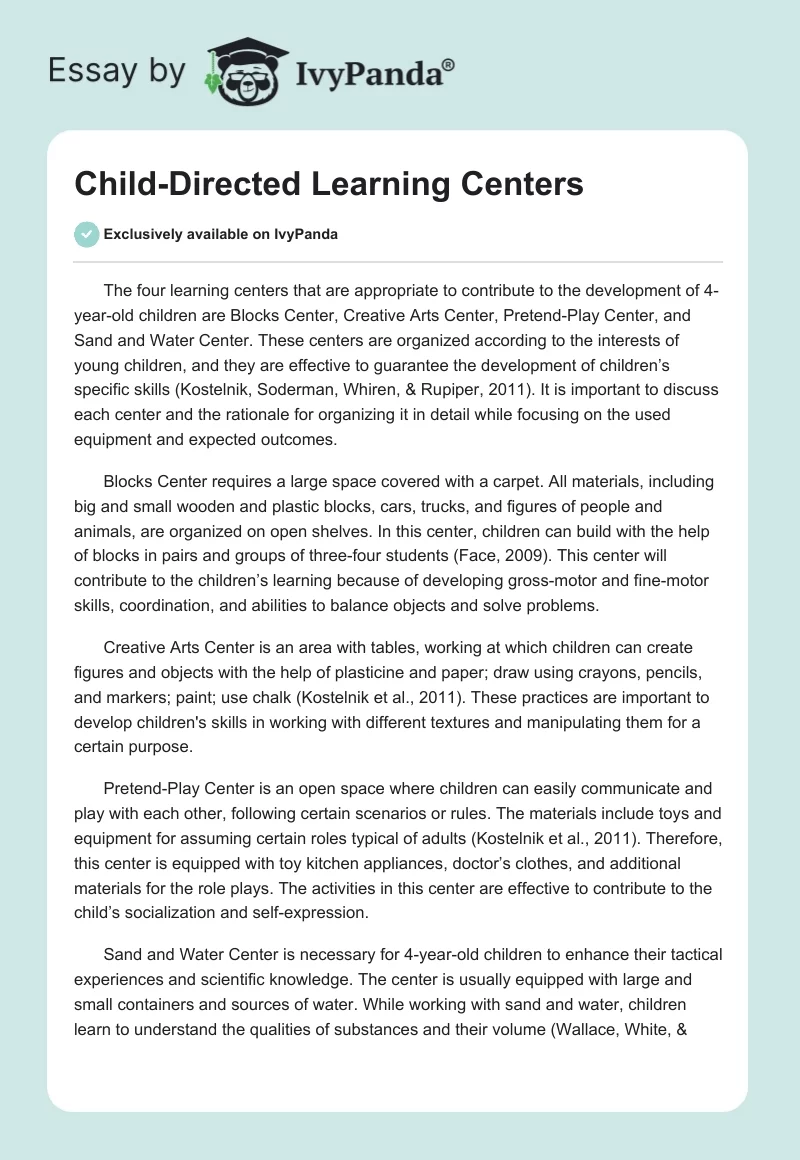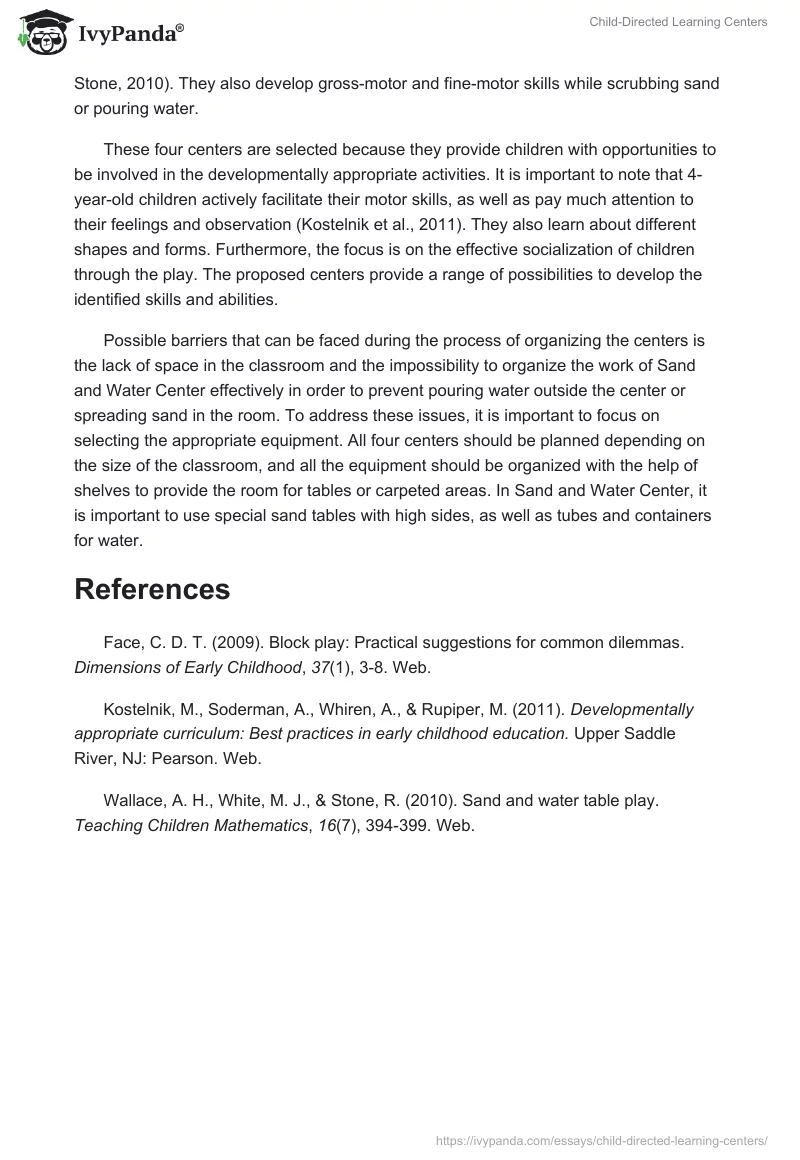The four learning centers that are appropriate to contribute to the development of 4-year-old children are Blocks Center, Creative Arts Center, Pretend-Play Center, and Sand and Water Center. These centers are organized according to the interests of young children, and they are effective to guarantee the development of children’s specific skills (Kostelnik, Soderman, Whiren, & Rupiper, 2011). It is important to discuss each center and the rationale for organizing it in detail while focusing on the used equipment and expected outcomes.
Blocks Center requires a large space covered with a carpet. All materials, including big and small wooden and plastic blocks, cars, trucks, and figures of people and animals, are organized on open shelves. In this center, children can build with the help of blocks in pairs and groups of three-four students (Face, 2009). This center will contribute to the children’s learning because of developing gross-motor and fine-motor skills, coordination, and abilities to balance objects and solve problems.
Creative Arts Center is an area with tables, working at which children can create figures and objects with the help of plasticine and paper; draw using crayons, pencils, and markers; paint; use chalk (Kostelnik et al., 2011). These practices are important to develop children’s skills in working with different textures and manipulating them for a certain purpose.
Pretend-Play Center is an open space where children can easily communicate and play with each other, following certain scenarios or rules. The materials include toys and equipment for assuming certain roles typical of adults (Kostelnik et al., 2011). Therefore, this center is equipped with toy kitchen appliances, doctor’s clothes, and additional materials for the role plays. The activities in this center are effective to contribute to the child’s socialization and self-expression.
Sand and Water Center is necessary for 4-year-old children to enhance their tactical experiences and scientific knowledge. The center is usually equipped with large and small containers and sources of water. While working with sand and water, children learn to understand the qualities of substances and their volume (Wallace, White, & Stone, 2010). They also develop gross-motor and fine-motor skills while scrubbing sand or pouring water.
These four centers are selected because they provide children with opportunities to be involved in the developmentally appropriate activities. It is important to note that 4-year-old children actively facilitate their motor skills, as well as pay much attention to their feelings and observation (Kostelnik et al., 2011). They also learn about different shapes and forms. Furthermore, the focus is on the effective socialization of children through the play. The proposed centers provide a range of possibilities to develop the identified skills and abilities.
Possible barriers that can be faced during the process of organizing the centers is the lack of space in the classroom and the impossibility to organize the work of Sand and Water Center effectively in order to prevent pouring water outside the center or spreading sand in the room. To address these issues, it is important to focus on selecting the appropriate equipment. All four centers should be planned depending on the size of the classroom, and all the equipment should be organized with the help of shelves to provide the room for tables or carpeted areas. In Sand and Water Center, it is important to use special sand tables with high sides, as well as tubes and containers for water.
References
Face, C. D. T. (2009). Block play: Practical suggestions for common dilemmas. Dimensions of Early Childhood, 37(1), 3-8. Web.
Kostelnik, M., Soderman, A., Whiren, A., & Rupiper, M. (2011). Developmentally appropriate curriculum: Best practices in early childhood education. Upper Saddle River, NJ: Pearson. Web.
Wallace, A. H., White, M. J., & Stone, R. (2010). Sand and water table play. Teaching Children Mathematics, 16(7), 394-399. Web.


